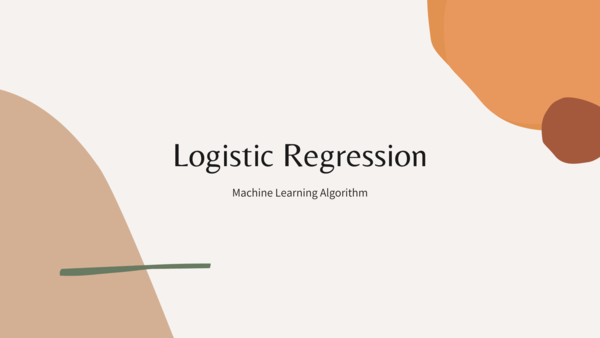Logistical regression is a type of algorithm that uses information from one set of data to predict another set. In this article, we’ll take a look at what logistical regression is and how it works as well as some popular examples where it’s been used successfully.
What is Logistical Regression
Logistic regression is a type of regression analysis that is used to predict the probability of an event occurring. It’s also known as multinomial logistic regression, and it’s used in marketing, fraud detection, and risk assessment.
Logistical regression can be used to model the relationship between a variable (for example gender) and another variable (for example age). In this case we would use gender or age as our dependent variable while other independent variables may include education level; income level; race/ethnicity; marital status etc..
Working of Logistic Regression
How Logistical Regression Works
Logistical regressions are an algorithm that determines the probability of an event.
For example, logistic regression models can be used to predict things like the probability of a customer buying something, or the probability of a patient having a certain disease.
Logistic regression is a type of statistical model that uses an equation to estimate probabilities for categorical outcomes (e.g., whether or not someone buys something). It does this by pairing up each possible outcome with its own unique weighting factor–a number between 0 and 1–and then adding these individual values together into one final score (or “logit”).
A Look into Logistic Regression Algorithms
Logistic regression is a type of regression analysis that is used to predict the probability of an event occurring. It is also known as logit or log odds model, and it models the probability of an independent variable being equal to or greater than some value.
Logistic regression uses an equation with two terms:
The dependent variable (the response) is modeled using one or more independent variables. These values are represented as coefficients on these independent variables in order for them to be included in your final model’s equation.
The constant term represents all other values for which there’s no change at all between two observations–these are called “constant” because they don’t change over time (like age).
Logistical regressions are good at predicting things that are binary.
Logistical regressions are a type of regression that uses logistic regression models to predict the probability of an event occurring.
Logistic regression is used to predict the probability of an event not occurring or, more commonly, the probability that an event will occur. Logistic regression can be used on any continuous variable (like income) or binary variables (like gender).
Implementation:
Code:
This is the code of Logistic Regression.
import pandas as pd
from sklearn.linear_model import LogisticRegression
from sklearn.model_selection import train_test_split
from sklearn.metrics import accuracy_score
# Load the dataset
data = pd.read_csv('my_dataset.csv')
# Split the data into training and testing sets
X_train, X_test, y_train, y_test = train_test_split(data.drop('target', axis=1), data['target'], test_size=0.3, random_state=42)
# Define and fit the logistic regression model
model = LogisticRegression()
model.fit(X_train, y_train)
# Make predictions on the test data
y_pred = model.predict(X_test)
# Calculate the accuracy of the model
accuracy = accuracy_score(y_test, y_pred)
print("Accuracy:", accuracy)
Code Explain:
In the above patch of code, first we import a bunch of Python libraries, then we use a data frame to import our data set, Once imported, the data is placed in a data frame for a more visual effect, and the data is split into two parts, testing and training data, before applying the logistical regression model to the training data and then to the test data.Once all is done, we will start with the prediction value, and in the last line we will check the accuracy of the model.
Conclusion
Logistical regression is a great way to understand how many different outcomes matter in your data. If you have a lot of data and need to make predictions, logistic regression is a great tool to use. With this algorithm, you can make predictions about how many outcomes will occur on their own or when combined with other factors like age or gender.
I will see you next time❤️.
Credit:
This article was written by Abdul Rafay and published on Future Insight.
Contact Us:
If you have any questions, please contact
Future Insight:
Author:
Abdul Rafay:
Supporting Materials
Here are all of the links and references that I used to write this blog, so feel free to visit them to get some more help.
Knowledge Nexus
Thumbnail:
